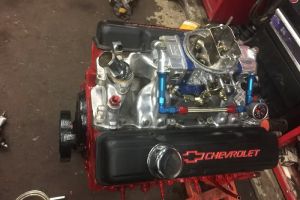How to Fix a Car with a Malfunctioning Horn – Step-by-Step Guide for Easy Repair
It was a typical afternoon, and I was running errands in my car when, all of a sudden, I pressed the horn to signal my presence, and nothing happened. No sound, no beep—just silence. I was a bit taken aback because the horn had always worked perfectly fine. I didn’t think much of it at first, but when I pressed it again and again, the reality set in: my car’s horn wasn’t working. I had to figure out what was wrong and how to fix it.
1. Understanding the Horn System in Your Car
Before diving into repairs, I realized that understanding how the car horn works was essential to diagnosing the problem. The car horn isn’t just a simple button or buzzer—it’s an electrical system that relies on a few key components. The horn itself, a relay, fuse, and wiring all play a role in ensuring that your horn works when you need it. When I thought about it, I realized that many different things could go wrong within this system, and identifying the exact cause would help me know where to focus my efforts.
The horn in my car works by sending electricity through the system to a device called the horn relay. This device activates the horn itself, which then produces sound. The process seems simple, but if any part of this system fails, it could result in a malfunctioning or non-working horn. The most common causes I discovered include a blown fuse, faulty relay, bad wiring, or a worn-out horn itself.
2. Initial Troubleshooting: The First Steps
My first instinct was to figure out whether the problem was something simple, like a blown fuse or a loose connection. I grabbed my car’s manual and flipped to the section on the horn to see where the fuse was located. I then checked to see if the fuse had blown, which is a common issue when the horn stops working.

J&J Auto Repair
2879 Lockbourne Rd, Columbus, OH 43207, USA
2.1. Check the Fuse
One of the easiest and quickest things I could check was the fuse. A blown fuse is often the culprit behind a malfunctioning horn. The fuse protects the electrical components of your car’s horn from a power surge or electrical overload. If the fuse blows, the horn stops working. I opened the fuse box under the dashboard and located the fuse for the horn—my car manual made this step much easier. When I pulled the fuse out and checked it, I could clearly see that it was blown, as the metal inside was melted. Replacing the fuse was a quick fix, and when I popped in a new one, the horn worked perfectly again. It was a relief, and I learned that keeping spare fuses in my car is always a good idea in case of future problems.

Lopez Auto Repair
1290 W Mound St, Columbus, OH 43223, USA
2.2. Check the Horn Relay
If the fuse was intact, the next thing I checked was the horn relay. A faulty relay can prevent the electrical current from reaching the horn. In my case, the horn relay was located in the fuse box, so I didn’t have to go far to find it. I swapped the relay with one from another circuit to see if the horn would start working, and sure enough, it did. The old relay was defective and needed replacing. I went to my local auto parts store and picked up a new one, installed it, and my horn was good as new. The horn relay isn’t always the issue, but it’s something to check if the fuse is fine.
3. Dealing with Wiring Issues
If neither the fuse nor the relay is the issue, it’s time to think about wiring problems. Over time, the wires connecting the horn to the rest of the electrical system can become loose, corroded, or damaged. These wiring issues often result in intermittent horn function or a completely dead horn. After checking the fuse and relay, I took a closer look at the wiring under the hood of my car. I looked for signs of wear, corrosion, or loose connections around the horn itself.
3.1. Inspect the Horn Connections
The first place I looked was at the horn connection itself. I noticed that one of the wires was slightly loose. After tightening the connection, I tested the horn again, but it still didn’t work. I then checked the wire for any visible damage or corrosion, which could have been preventing proper electricity flow. Sure enough, one of the wires had a small break in the insulation, causing the problem. I wrapped the exposed wire with electrical tape, reconnected it, and tested the horn again. It worked perfectly, and I was glad to have fixed the issue without needing to replace the horn itself.
3.2. Examine the Grounding System
If the wiring seemed intact, the next step was to check the grounding system. A bad ground connection can prevent the horn from receiving enough power to work. I followed the wire from the horn to the ground point and cleaned the area where it was connected to the car’s body. After cleaning the connection, I tested the horn again. Fortunately, this was the final step, and the horn began working properly once again.
4. When to Replace the Horn
Sometimes, the issue may be with the horn itself. If the fuse, relay, and wiring are all in good condition, but the horn still isn’t working, it might be time to replace the horn. In my case, the horn worked again after fixing the electrical connections, but if it hadn’t, I would have replaced the horn. Car horns are relatively inexpensive and easy to replace, so it wouldn’t have been a big deal if that had been the issue.
4.1. Testing the Horn
If you suspect the horn is the problem, the simplest way to check is to test it with a direct power source. I used jumper cables to connect the horn directly to the battery. If the horn sounds when connected this way, the problem lies within the wiring or electrical system, not the horn itself. If the horn doesn’t work even with a direct connection, then it’s likely time to replace it.
4.2. Replacing the Horn
Replacing the horn involves disconnecting the old one, removing the mounting hardware, and installing a new horn in the same location. Most auto parts stores carry universal horns, which can be a straightforward replacement. After installing the new horn, I tested it, and it worked perfectly. It’s always a good idea to consult your car’s manual or a professional mechanic if you’re unsure about the process.
5. Calling for Professional Help
If you’ve tried all the troubleshooting steps and your horn still isn’t working, it may be time to call for professional help. Sometimes, the issue can be more complex than a simple fuse or relay replacement. In these cases, a professional mechanic can diagnose the problem more accurately. I’ve found that getting the job done right, especially with electrical systems, is worth the investment in the long run. Additionally, if you're unable to make the repair yourself or need a tow to a mechanic, having a reliable towing service is crucial.
If you ever find yourself in need of towing or emergency assistance, I recommend Rescue & Towing. Their team is quick to respond and always provides reliable, professional service. Whether you need a tow to the nearest mechanic or help with car repairs, they are the ones to call. Visit their website today to learn more about their services!


























